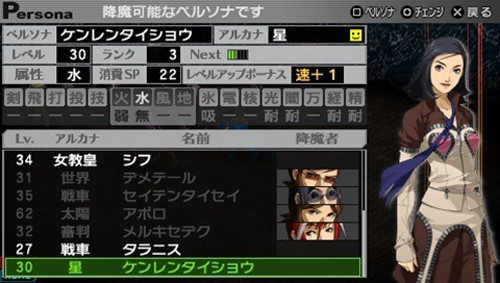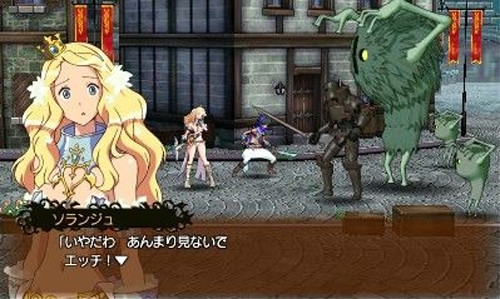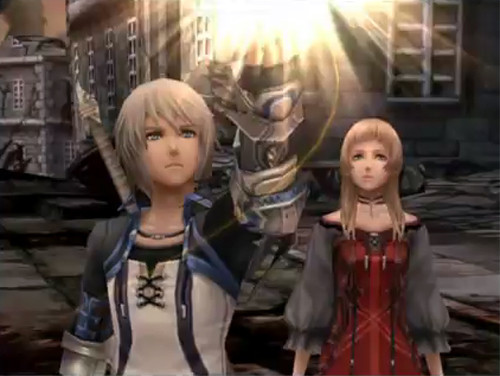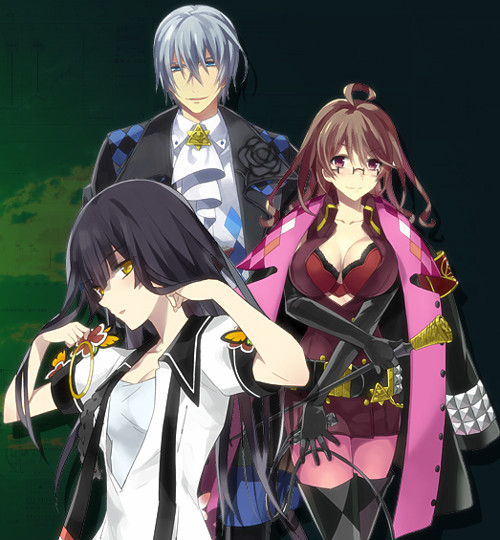The X Button
Mobile Light Force
by Todd Ciolek,

This is a lousy way to start the year. It's not even March, and already two masterful, influential artists are gone. Ralph McQuarrie, who defined the look of Star Wars and countless other science fiction descendants, passed away earlier this month. And last week, Jean “Moebius” Giraud died.
It's hard to truly calculate Giraud's influence, simply because he worked on so many science-fiction staples and set the standards for many others. He made a big enough mark in comics alone, from his Western Blueberry to the word-free Arzach and the sci-noir The Long Tomorrow. In film, he helped design all sorts of notable sights for Alien, Tron, Time Masters, that Little Nemo movie that took forever to make, and Alejandro Jodorowsky's insane and sadly never realized Dune adaptation. The Metreon in San Francisco even hosted an arcade called the Airtight Garage, stocked with games influenced by Giraud's work.

Aside from that, Giraud's influence on video games was largely indirect, as many were inspired by his work in film and comics. The Panzer Dragoon series, however, went straight to the source. Giraud contributed several pieces of art for the original game, and the influence of Azrach can be seen just about everywhere in Panzer's fantasy vistas and curious technology. And with the upcoming Crimson Dragon resembling Panzer Dragoon in many ways, it's another sign of just how great an impact Giraud made.
NEWS
PERSONA 2: ETERNAL PUNISHMENT GETS NEW MATERIAL ON PSP
Well, this just about brings the Persona series up to speed. Atlus already ported the original Persona, Persona 2: Innocent Sin, and Persona 3 to the PSP, and their upcoming version of Persona: Eternal Punishment closes the last gap. It's the second half of Persona 2, and it presents an alternate version of Innocent Sin's world. Here, Maya “Let's Positive Thinking!” Amano is a reporter for a teen-targeted magazine, and she only has vague recollections of who she was in the world of Innocent Sin. While investigating a serial killer called JOKER (their caps, not mine), Maya's joined by her hard-drinking, romantically doomed roommate Ulala Serizawa, petty criminal Baofu, detective Katsuya Suou, fashion model Eriko Kirishima, and businessman Kei Nanjo. They also run across Innocent Sin's hero Tatsuya Suou, who seems to have some idea of what's really going on in both halves of Persona 2.

For its PSP port, Eternal Punishment gets rearranged music, a Madhouse-animated opening, and a new scenario focused on Tatsuya. Of course, the original PlayStation game was quite good to start with. It lacks the social side of Persona 3 or 4, but it's a solid RPG set in the franchise's vision of a modern-day Japan where other-dimensional monsters lurk within the psychological constructs of society. The battles let players negotiate with the demons they encounter, aside from the usual options of employing attacks and fearsome Persona alter-egos to kill everything in sight. Also notable is the ability to spread rumors among the population—and watch them turn real if enough people believe.

Atlus hasn't yet announced a U.S. release for Persona 2: Eternal Punishment, and a physical PSP edition seems a gamble right now. But even if it stays in Japan, Eternal Punishment's release means that there's one fewer remake to get in the way of Atlus unveiling Persona 5. We're all caught up on the important older Persona titles now, Atlus. Hint hint.
CODE OF PRINCESS LOOKS SURPRISING NON-AWFUL NOW
When Agatsuma Entertainment's Code of Princess was first revealed, it looked…well, it looked like crap. It was a 3DS brawler from a little-known publisher, and it was based on nothing more than a Kinu Nishimura illustration of a young warrior woman wearing as close to nothing as mainstream art will allow. But this wasn't the end of it. A zombie mage, a thief, and an elf singer joined the underdressed Princess Solange. And then we found out that the game's development staff includes Tetsuhiko “Han” Kikuchi, Masao Ukyou, and others who worked on Treasure's classic beat-'em-up Guardian Heroes. And THEN we found out that Code of Princess takes after Guardian Heroes when it comes to dashing, blocking, and jumping between different “layers” of the playing field. In fact, Code of Princess even has a similar versus mode, one where players can control all sorts of characters from the regular game, including hideous demon-bosses and everyday townspeople. That alone should bring a smile to anyone who dug into Guardian Heroes' versus modes.

Aside from the crazed battle royale, the single-player mode allows up to four players to join in through either online or local connections, and the storyline's main characters now include a mace-wielding nun, a samurai, a cat dressed like an Egyptian Pharaoh, and a belt-clad brawler named Mr. T. It's enough to make any Guardian Heroes geek want a U.S. release of Code of Princess, even if they have to change a few names or censor Solange's attire. Sadly, no one has yet bitten, even though Agatsuma appears interested in bringing the game here. It arrives in Japan next month, and any importers had best own a Japanese 3DS.
IN BRIEF: SPIKE AND CHUNSOFT MERGE, DEADLY PREMONITION HEADS TO PS3, NEW MAGAZINE EMERGES
With the Japanese game industry sailing some rough seas, many developers are forging new alliances. The latest unifies Chunsoft, makers of the Shiren dungeon hacks and adventure games like Zero Escape, with Spike, developer of Crimson Tears and a whole mess of Dragon Ball Z fighters. Announced last November, the partnership becomes final next month, and it was apparently built on past collaborations. After all, Spike ported Chunsoft's hit visual novel 428 to Sony systems, and both companies are owned by the Dwango conglomerate. Neither of them is inclined to confuse the public with this marriage, as the new company's called Spike Chunsoft.
Deadly Premonition earned a lot of critical praise with its endearingly strange take on Twin Peaks, but it didn't really expand to new venues until now. At the recent Game Developers Conference, Toybox Games founder Yasuhiro Wada mentioned that a “remastered” Deadly Premonition is headed for the PlayStation 3, with new storylines devised by director Hidetaka “Swery65” Suehiro. While the game was already released on the PS3 back in 2010, only the Xbox 360 edition made it to North America. This is supposedly only one of several Deadly Premonition projects in the works. Look for Deadly Premonition action figures, Deadly Premonition bedsheets, and a Deadly Premonition cartoon where special agent Francis York Morgan is a teenager who's transported to a wacky dimension of Lynchean horrors.
Having grown up with gaming magazines, I'm always glad to see new ones arise in this era of blogospheric forumite metacritical instanet or whatever. The newest is Retro Gaming Magazine, a project hatched by some former employees of GameFan and Electronic Gaming Monthly. It's still in the Kickstarter phase, and it still needs backers. Anything that discusses Wonder Boy deserves a little money, I think.
OPINION: THE MOBILE GAME
This week sees the release of Chaos Rings 2. It's the third game in Square Enix's series of traditional RPGs for the iPhone, iPad, and their kin. It's an RPG very much in the style of Square Enix's PlayStation Final Fantasies, with turn-based battles, pretty backgrounds, sharp Yusuke Naora artwork, and grand dose of melodrama. It's just the sort of game that many Final Fantasy geeks accuse Square Enix of no longer making. It's also a sign of the ongoing battle between mobile games and the world of home consoles and handhelds.

It's a worry aired frequently in the past few years: the iPhone, Android, and other mobile platforms are siphoning away time, money, and even entire publishers from “real” games. When Nintendo posted a loss and 3DS sales didn't soar as high as expected, many were quick to blame the rise of iPhone apps. Why should adults and even children pick up the latest Nintendo handheld just to play games? They can get plenty of games on their smartphones, and those games are cheaper, easier to play, and more acutely focused on this “social media” thing. Why, just the other day I saw my grandmother playing Angry Birds and…
Yes, the argument is familiar, but there was often a divide between the biggest iPhone apps and the benchmarks of handheld games. That divide grew less and less noticeable once games like the original Chaos Rings showed up. Square Enix released three of these slick-looking RPGs on the iPhone instead of the DS or PSP, and appearances had little to do with it. Chaos Rings 2 looks for all the world like a good PSP game, and it shows that there's not much technical separation between a high-end smartphone and a still-viable handheld game. Nor is this Square Enix's plan alone. Other companies are putting more and more focus on the iPhone. Even Final Fantasy creator Hironobu Sakaguchi, who spent the past decade trying to recapture the big-budget RPG crown with Lost Odyssey and The Last Story, is now at work on some mobile games.

This is particularly important in the sagging Japanese sector, where big game publishers are losing ground and small development houses are drying up completely. For example, Cave spent many years as the chief custodian of 2-D shooters, supplying arcades with one bullet-hell challenge after another. Cave's support for arcade shooters continues today, but they've also latched onto the iPhone with a remora's devotion. Many of Cave's notable shooters, including ESP galuda II and Dodonpachi, were distilled down to iPhone apps with surprisingly decent controls. Cave also dabbled in original iPhone creations like Mushihime-sama: Bug Panic, and their latest is the seemingly ambitious multiplayer RPG Tokyo Therion (above).
And it seems to work. Cave is still around, which makes makes one wonder if the same route would've helped other Japanese companies caught in a market that punishes anyone between the titans and the small-timers. Would Ninja Studio still be around if they'd put the Izuna games on the iPhone? Should Hudson Soft have made their Bonk revival on the iPhone instead of Xbox Live? Might Game Republic have survived if they'd worked on quick, cheap iPhone titles instead of large-budget duds like Clash of the Titans and Knights Contract? Maybe.

If this is the way of the future, why complain? It'll help Japanese development, and it'll mean cheaper, more accessible games in old-fashioned and oft-neglected genres. Yet that last part might be the only justified worry. Services like WiiWare and Xbox Live inspired all sorts of ports and revamps of classic action titles, with Bangai-O and Contra and Castlevania and Blaster Master all getting new outings. This may not last in the coming generation. Developers may find Xbox Live games expensive and time-consuming when players can simply head to the iPhone and grab classically influenced action games like Ziggurat (above) for 99 cents. Perhaps that's why the only recent Mega Man game is an iPhone port of Mega Man X.
There's also the problem of control. The touch screens of iPhones and Android models work well for simple games developed specifically for the hardware, and traditional RPGs like Square Enix's multi-part Final Fantasy Legends aren't damaged by touch-screen input. It's another story with action-driven genres, though. Cave's shooters are hardly unplayable, but they're just not as precise on the iPhone as they would be with a typical controller. This goes double for the more complex motions of a brawler or a side-scrolling platformer. There's a solution in d-pad adapters like the iCade, which houses the phone inside a traditional controller, making everything from Shante: Risky's Revenge to Casey Duck: Butter Duck much easier to play. Still, it's not quite the same as a dedicated gaming unit.
So these are interesting times for anyone who likes the time-honored stylings of 2-D games. The 3DS and PS Vita have tough fights ahead, but perhaps games won't change all that much if the two systems lose. We'll still have old-school games made new, even if they aren't in the same places. And if we have to play Mega Man 11 or the next Treasure game on the iPhone, that's better than playing it nowhere at all.
NEXT WEEK'S RELEASES
ARMORED CORE V Developer: From Software
Developer: From Software Publisher: Namco Bandai Platform: PlayStation 3 / Xbox 360 Players: 1-multiplayer MSRP: $59.99 When I think of Armored Core fans, I think of the Armored Core column that Pat Reynolds wrote for the now-defunct Tips & Tricks magazine. Reynolds invited readers to send in robots that they designed, and since all of this happened in the days before rampant online file-sharing, some people sent him the actual memory cards that held their Armored Core saves. That's the sort of person that turned Armored Core into a prosperous series, and the title of Armored Core V shouldn't mislead anyone; it's actually the fourteenth game in the franchise. It's set in world ravaged by apocalyptic war, and much of that war is waged via giant mecha called “ACs.” As in many of the Armored Core titles, the emphasis is on mecha customization, with over 500 different parts available to create a unique robot. From also made this latest outing a bit more challenging in terms of the environment: the surroundings demand some strategy when players attack, and the terrain is sometimes an enemy in itself. Most interesting is Armored Core V's constantly online aspect. At the game's start, you'll choose to side with one particular faction in the game's depressing little vision of the future. From that point on, everything you accomplish in the single-player mode helps your faction. Even if you're not participating in online battles, your solo accomplishments help the greater cause, giving your army more territory or funds. This is tracked online, effectively creating one huge war shared by every Armored Core V player. Of course, there's a multiplayer online mode if you want that instead. It allows up to five players to a team, with one coordinating the others as a commander. Yes, it gives you a valid reason for bossing others around during online battles. |
KID ICARUS: UPRISING Developer: Project Sora
Developer: Project SoraPublisher: Nintendo Platform: Nintendo 3DS Players: 1-multiplayer MSRP: $39.99 Kid Icarus is an interesting study in nostalgia. The original game wasn't all that great, but it was an early first-party Nintendo title with a memorable hero. That was all it took to land Kid Icarus alongside Mario, Link, and Metroid's Samus Aran in early Nintendo iconography. Even though Nintendo only made one other Kid Icarus (in the form of an improved but swiftly forgotten Game Boy sequel), some people never forgot the series. After years and years of reacting to Kid Icarus requests with a polite amusement, Nintendo finally started up another game, with Kirby and Super Smash Bros. creator Masahiro Sakurai directing. Kid Icarus: Uprising sticks to what the fans will remember: Pit is a winged hero facing off against the armies of Medusa, all on the orders of a goddess named Palutena (whose name should've probably been “Parthena” back in 1987, but it's too late to change it now). While the game is now a 3-D action deal, it adapts concepts from the two earlier games. Rail-shooter levels are a natural fit for the series, and they're balanced out by on-foot stages where Pit can use projectiles or close-range attacks. All of this is accomplished with the 3DS controls and touch-screen, and Nintendo even threw in a system stand to make things more comfortable. Let's hope that isn't an early attempt at damage control. In other ways, Kid Icarus isn't the game that the first Nintendo generation remembers, and that's because Sakurai went nuts with the whole idea. Pit has a basic arsenal of arrows, swords, and claws, but he can also acquire a giant drill, an ancient Greek assault cannon and a “Cherubot” battle mecha. Along his quest, Pit encounters an evil doppelganger named Dark Pit, a Tempura Wizard, and a burly swordsman named Magnus (who looks like Brutal Legend's Eddie Riggs run through the Final Fantasy ringer). Sakurai even devised a fairly complex versus mode based on Smash Bros., and the game uses all sorts of Kid Icarus AR cards with the 3DS camera. On top of all this, much of the game has Pit, Palutena, and other characters trading all sorts of goofball dialogue. It's as though Nintendo made a Kid Icarus cartoon back in the 1980s instead of putting Pit in that Captain N embarrassment. And after Metroid: Other M, I'm all for Nintendo games that don't take themselves too seriously. |
NINJA GAIDEN 3 Developer: Team Ninja
Developer: Team Ninja Publisher: Tecmo Koei Platform: PlayStation 3 / Xbox 360 Players: 1-8 MSRP: $59.99 Previous games in the Ninja Gaiden revival were chiefly about rampant violence, scantily clad women, and quick, well-assembled gameplay. Ninja Gaiden 3 still has all of that, but it's also about that moment in a blood-drenched action game where you pause and start to feel just a little sorry for all of the low-level enemies you're dicing into gruesome confetti. Ninja Gaiden 3 offers this sudden dose of morality early into its first mission, but it takes a while for series hero Ryu Hayabusa to take it in; at first, he's pitted against a terrorist cell led by the Regent of the Mask, who appears to be visiting from Assassin's Creed. Ryu's mission takes him to European cities, desert ruins, and far stranger places, often in the company of Japan Self-Defense Forces agent Mizuki McCloud and some other regulars from the Dead or Alive series. While the previous modern Ninja Gaidens were seldom lauded for their storylines, Ninja Gaiden 3 is notable for the input of Masato “Runmal” Kato, who scripted Chrono Cross, Xenogears, Chrono Trigger…and the original Ninja Gaiden trilogy on the NES. He's supposedly dropped a few references to those old games, but there's no saying if there'll be appearances by Irene Lew and Robert T. Sturgeon. Despite newfound qualms about his rampant murders, Ryu is still the agile killing machine he was in previous Ninja Gaidens. He's expanded his range with a wall-climbing maneuver and other new abilities, some of which have to do with his arm absorbing energy from his sword. Less novel are the game's frequent quick-time events, but those sudden button jabs aren't leaving the game industry anytime soon. Like Ninja Gaiden 2, the third game in the series isn't a solitary endeavor, and an online mode supports up to eight players. All of whom can feel better about killing each other's avatars. |
RESIDENT EVIL: OPERATION RACCOON CITY Developer: Slant Six Games / Capcom
Developer: Slant Six Games / Capcom Publisher: Capcom Platform: PlayStation 3/ Xbox 360 / PC Players: 1-multiplayer MSRP: $59.99
Too bad, Operation Raccoon City. You were all set to be 2012's big Resident Evil game, but then Capcom just had to go and announce Resident Evil 6. And now Operation Raccoon City is back to being another spin-off, albeit a rather ambitious one. Essentially the Resident Evil take on team-based shooters, it drops two different groups of heavily armed specialists into Raccoon City during the zombie outbreak of Resident Evil 2 and 3. One faction is a security detachment from the nefarious Umbrella corporation, and they're charged with killing the undead and generally covering up their employer's illicit activities. So they're at odds with the second faction, a group of United States Special Operations types who are out to bring Umbrella to justice. Each side has members with names like “Spectre” and “Willow,” and each of them has a combat specialty. Medics repair their teammates faster, snipers are self-explanatory, and a team's scientist can actually control biological weapons mid-battle. Of course, all of them are equally susceptible to zombie bites, and they'll attack their former comrades once the virus takes hold. And since this is all taking place around the same time as other Resident Evils, characters such as Leon Kennedy and Jill Valentine will pop up during the normal quest. Then players can kill them and thus Wisely borrowing from squad shooters and recent Resident Evils, Operation Raccoon City allows players to move when firing, to duck behind cover, and to generally prove more agile than the “classic” mode of Resident Evil characters. It's also a team effort one way or another, and even the single-player mode supplies three computer-controlled allies. It's really best appreciated online, where six-player squads join up and take each other on. While they're free to kill each other, there's a greater emphasis on a team completing their mission. The online “Heroes Mode” also offers playable versions of familiar Resident Evil characters, including Ada Wong and Hunk. Tofu, the knife-wielding soy product from Resident Evil 2, appears to be absent once again. |
SILENT HILL HD COLLECTION Developer: Konami
Developer: Konami Publisher: Konami Platform: PlayStation 3 / Xbox 360 Players: 1 MSRP: $39.99 In the grand tradition of noting games for the controversies they inspire, here's what happened with Silent Hill HD Collection. Konami first raised some eyebrows by including only Silent Hill 2 and 3, ignoring the original PlayStation Silent Hill just as the Metal Gear Solid HD Collection ignored its PlayStation outing. Then it was revealed that the voices for both games would be re-recorded. Now, Silent Hill 2 is one of those important games; like Earthbound and Grim Fandango, it comes up a lot when people discuss the rare cases of good storytelling in this industry. So fans are quite attached to the original voices and the localization job that Jeremy Blaustein did, and they're also fond of the Silent Hill 3 performances. Many simply didn't want a new dub, not even one with Mary Elizabeth McGlynn and Troy Baker. And after some discussion with the original cast, Konami threw in the option to hear Silent Hill 2's original voices as well as the new one . As for Silent Hill 3, Konami stated that the game had to be re-recorded for logistical reasons, and a theory arose that this was because Heather Morris, who voiced protagonist Heather Mason, couldn't be found. But then she turned up, and the whole Silent Hill HD Collection was delayed. So those same fans haven't lost all hope. Why all the fuss over Silent Hill 2 and 3? Well, they're considered the high points of a series that effectively took the whole “survival horror” concept and turned it into something atmospheric, symbolic, and subtly unnerving. Borrowing a bit from Jacob's Ladder, both games present average people forced to explore twisted breaks with reality tied to a foggy, haunted town called Silent Hill. The second game concerns James Sunderland, who's compelled to visit Silent Hill by memories of his dead wife and instead finds a terrifying tour of his and others' dark psyches. Silent Hill 3 throws teenager Heather Mason into a realm of hideous creatures and ugly secrets, most of which are involve her father and the original Silent Hill. The HD Collection remasters the soundtrack, adds the new voices, ups the visual quality, and…well, that's about it. But some games don't need elaborate extras.
|
discuss this in the forum (24 posts) |
this article has been modified since it was originally posted; see change history